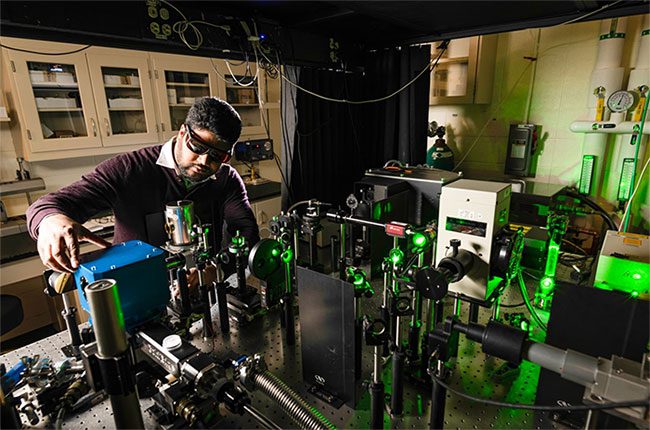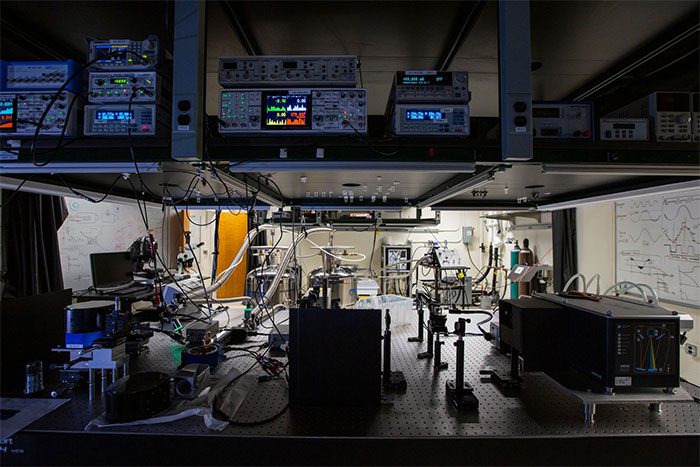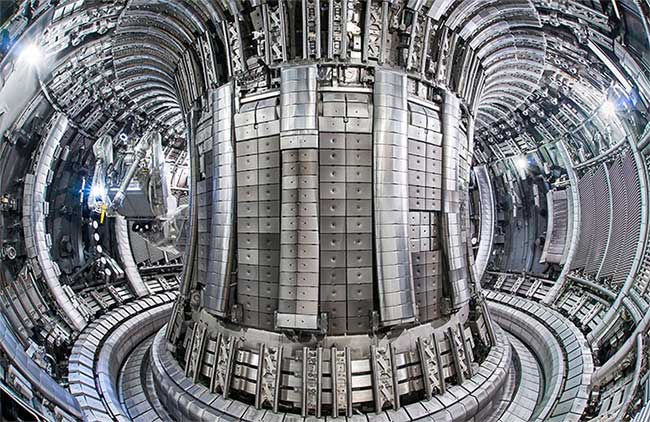A Breakthrough in New Superconductors Could Transform Energy Usage and Improve Nuclear Fusion Reactions.
American scientists have announced the production of the first commercial material that eliminates energy loss as electricity travels along conductors.
According to the Wall Street Journal, this promises to be a breakthrough that could extend battery life, enhance the efficiency of power grids, and improve high-speed trains.
The research is from a team of scientists at the University of Rochester. Reports indicate that they have created a new superconductor that can operate at room temperature and under much lower pressure than previously discovered superconducting materials.
Next-Generation Superconducting Material
Typically, electric current encounters resistance as it moves through conductors, similar to a form of friction. This results in energy loss in the form of heat.
Over a century ago, physicists discovered materials now known as superconductors, where resistance seemingly disappears miraculously.
However, a significant drawback of these materials is the need for extreme cooling, around -195 degrees Celsius, and exposure to extremely high pressures to function.
This limitation has hindered the practical applications of superconducting materials. For decades, scientists have been at a standstill in their search for superconductors that can operate at room temperature.

Room temperature superconducting material experiments by the research team. (Photo: University of Rochester).
In reality, the groundbreaking research on a new superconductor that can function at room temperature from the University of Rochester was recently published in the journal Nature, and it’s not entirely new.
In 2020, Ranga Dias, an assistant professor of mechanical engineering and physics at the University of Rochester who led the research, previously published a paper claiming to have created two similar superconducting materials in articles published in Nature.
However, this paper was quickly retracted by the editors after numerous scientists questioned some data in the research process.
Specifically, in the 2020 study, Dias’s team reported that they created a superconductor made from a combination of hydrogen, sulfur, and carbon that operated at temperatures close to room temperature.
Interestingly, this superconducting material only functioned after being heated with laser beams and crushed between the tips of two diamonds to a pressure greater than that found at the Earth’s core.
Meanwhile, in the recent study, researchers modified the formula of this superconductor by adding nitrogen and a rare earth metal called lutetium to hydrogen instead of sulfur and carbon.
Once again, the experiment involved heating and compressing using a diamond anvil cell—a technology that generates extremely high pressures using two diamonds. To compare, this pressure is about ten times that generated at the bottom of the deepest ocean trenches on Earth.
The research team named the obtained material “red matter” after observing the superconducting material change colors from blue to pink to red when compressed. Dr. Dias stated that this nickname was inspired by fictional matter that creates black holes in the blockbuster movie Star Trek.
Researchers found that “red matter” can exist at around 20 degrees Celsius and a pressure of 145,000 psi, which is about 1/360 of the pressure in the Earth’s core.

The color of the superconducting material changes from blue to pink to red when compressed. (Photo: Ranga Dias).
Compared to the 2020 study, this material can withstand an additional 10 degrees F and reduce pressure to about 1/1000.
“This result is a breakthrough for the scientific community, created by Dr. Dias—who has a keen intuition for chemical substances,” praised Stanley Tozer, a research scientist at the University of Florida.
An Interdisciplinary Leap
Although it is still far from the pressure that humans can withstand at sea level, around 15 psi, Dr. Tozer believes this is still within “the range that engineers can jump into and create a commercially viable product.”
Tozer also affirmed that thanks to this breakthrough, superconducting materials are now commercially accessible.
Engineers and materials scientists can potentially reach pressures of about 145,000 psi using specialized techniques and tools related to chip manufacturing or diamond synthesis.

Superconducting materials that can function under normal conditions, named “red matter” by the research team. (Photo: WSJ).
“In the next five years, we will have devices containing components made from superconducting materials. This means that phones or laptops will use less power to operate without energy loss as heat, resulting in longer battery life. Additionally, similar components could also be integrated into electric vehicle batteries,” said Ashkan Salamat, a co-author of the study at the University of Nevada.
According to Dr. Salamat, superconductors that operate at everyday temperatures and pressures could also help address issues such as climate change.
Salamat gave the example that a power grid made from superconducting materials could store solar or wind energy for an indefinite period and transmit it over long distances without loss.
The U.S. Energy Information Administration estimated that on average, about 5% of electricity is lost during transmission and distribution in the country from 2017-2021.
Thus, more efficient energy storage and transmission would mean less energy usage, leading to reduced carbon emissions.
Furthermore, another significant application emphasized by Dr. Salamat is that superconductors could pave the way for better, cheaper machines to conduct nuclear fusion reactions, which have long been considered a clean and nearly limitless energy source.

Superconductors could pave the way for better, cheaper machines to conduct nuclear fusion reactions, which have long been considered a clean and nearly limitless energy source. (Photo: Zuma Press).
Essentially, nuclear fusion is the process of generating heat and light from the Sun or other stars. Specifically, it involves light atoms colliding to create heavier atoms, releasing a significant amount of energy in the process, according to The Guardian.
The release of immense energy during this process has the unparalleled advantage of not producing any radioactive waste or greenhouse gas emissions.
Many thermonuclear machines rely on magnetic fields to contain the reaction, and superconductors can generate some of the strongest magnetic fields. However, the challenge is that keeping these superconductors cool requires very bulky and expensive equipment.
Dr. Dias stated that a superconductor like “red matter,” which can generate a massive magnetic field at room temperature, could be a game-changer in the coming decades for efforts to build thermonuclear reactors.





















































